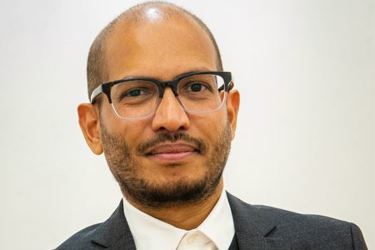Looking Back, Looking Ahead: Getting Answers To Evolving Water Issues

By Kevin Westerling,
@KevinOnWater

A review of the WEFTEC tradeshow, current and emerging water threats, and the latest water and wastewater solutions from the VP of a fast-rising treatment provider.
Sudhakar (Sunny) Viswanathan has 25 years of water-industry experience, has authored over 35 technical papers, and has earned bachelor’s and master’s degrees in environmental engineering from Syracuse University. In his current role as Vice President of 374Water, a global cleantech, social impact company based in Durham, NC, he spearheads the commercialization and business development of supercritical water oxidation technology, which is becoming increasingly important for the destruction of per- and polyfluoroalkyl substances (PFAS).
I spoke with Sunny about his impressions from the recently held Water Environment Federation Technical Exhibition and Conference (WEFTEC) in Chicago (Sept. 30-Oct. 4), which is North America’s largest annual water quality event and ground zero for industry problem-solving. PFAS was an important topic, of course, but it is just one of many challenges that water and wastewater managers must overcome. Read on for Sunny’s insight and advice on how to do so.
What were the key takeaways from this year's WEFTEC conference in terms of emerging trends and innovations, and how did it compare to years past?
WEFTEC 2023 showcased several emerging themes, encompassing a wide array of topics such as contaminants of emerging concerns (CECs), PFAS, greenhouse gas reduction/decarbonization, digital twins, and potable reuse. Compared to last year, we saw a remarkable increase in the number of technology providers focused on these emerging areas. Notably, there was a surge in the participation of nearly a dozen new companies specializing in PFAS destruction technologies, particularly those focusing on water and liquid waste treatment. This was especially evident at the Innovation Pavilion, but also among established companies in the field. As the event continued to evolve, it became clear that the water industry was quickly adapting to address the most pressing challenges of our time.
How is the water sector responding to the growing demand for sustainable and environmentally friendly practices, and did you see any compelling examples at WEFTEC?
Outside of PFAS and CECs, the emerging topic of interest in the water industry was greenhouse gas (GHG) reduction. Numerous companies and engineers discussed plans, steps, and goals for their respective entities to reduce GHGs using novel technologies, best business practices, sourcing and supply chain, science and engineering, etc. 374Water showcased the AirSCWO process as a means to not only address the CEC challenge, but also its ability to simultaneously reduce energy utilization and GHGs. This innovative technology represents a promising avenue for achieving sustainability while curbing carbon emissions.
Given the ongoing concerns about water scarcity, what are the most significant advancements in water reuse and recycling discussed at WEFTEC, and how can these be applied on a global scale?
The water industry is undoubtedly adapting to the growing demand for sustainable and environmentally friendly practices. Water reuse is emerging as a common theme that holds great promise for the near future. One notable example of this trend is exemplified by utilities such as the Orange County Sanitation (OC San) District in Southern California. They are 374Water's first customer in the U.S. and hope to use the AirSCWO process to further recover water from wastewater treatment. Their exceptional achievement in reclaiming 100% of the water from wastewater treatment for groundwater aquifer recharge was recognized with the prestigious WEF Project Excellence Award this year.
The industry overall is recognizing and celebrating innovative technologies and practices that promote sustainability, efficiency, and environmental responsibility. This was evident at WEFTEC, where multiple organizations, including OC San, were recognized for their dedication to sustainability and environmental best practices.
PFAS contamination has been a growing concern in the water industry. Were there any discussions at WEFTEC about strategies, technologies, or regulatory updates aimed at addressing PFAS contamination in water sources and treatment processes, and what steps can water companies take to mitigate this issue?
The growing concern over PFAS contamination in the water industry was a central topic of discussion, with numerous concurrent technical session tracks and workshops dedicated to addressing PFAS and other emerging contaminants. These discussions emphasized the urgency of the issue and the need for proactive solutions.
Over 27 technical tracks explored PFAS-related topics, providing a platform for experts, researchers, and industry professionals to share their knowledge and potential solutions to tackle PFAS contamination. In addition to the technical tracks, workshops, and sessions were conducted by various experts, contributing to the exchange of ideas.
Mitigating PFAS contamination is indeed a complex challenge, and there is no one-size-fits-all solution. Strategies and technologies discussed included advanced water treatment technologies, such as activated carbon adsorption, membrane filtration, and ion exchange, known for their effectiveness in removing PFAS from water sources. Source waste management and staying updated on relevant regulatory changes were emphasized as preventive measures.
Monitoring and testing of water sources for PFAS contamination were also highlighted as essential measures, with discussions covering the latest rapid and accurate detection methods. Collaboration among water industry professionals and the promotion of research and innovation were integral components of the discussions at WEFTEC.
What are some ongoing or upcoming issues for municipalities to contend with regarding PFAS?
Municipalities are grappling with challenges surrounding PFAS in wastewater. A key issue is the lack of clear EPA guidance on regulation. Many municipalities are adopting a cautious "wait and watch" approach, which can lead to sudden demand spikes upon regulatory enforcement, straining the supply chain. This uncertainty underscores the urgent need for comprehensive and consistent federal guidelines to address PFAS contamination in wastewater systems.
To overcome these challenges, municipalities need to prepare to fast-track projects upon regulatory clarity. They should also embrace innovative, albeit less-established, technologies to effectively tackle PFAS, such as 374Water's AirSCWO, which offers advanced solutions for PFAS destruction. Municipalities must be proactive and open to innovation in addressing the evolving issue of PFAS contamination.
